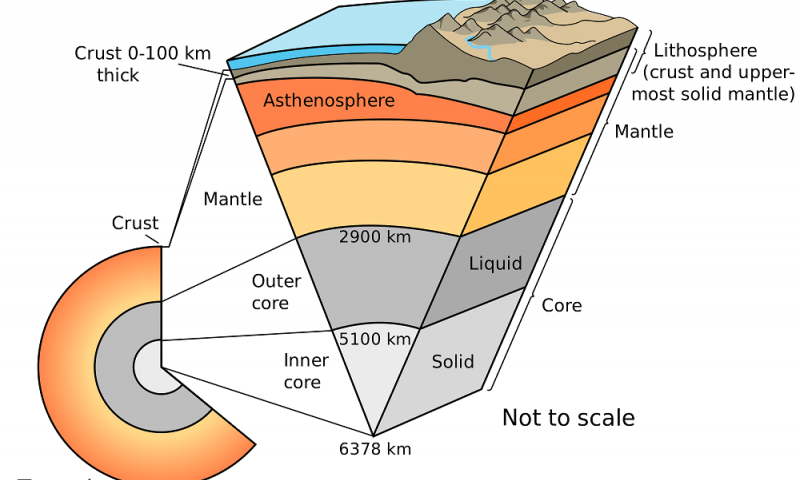Geography
Iron Snow on Earth’s Inner Core
- 04 Jan 2020
- 4 min read
According to a study published in journal JGR Solid Earth, the earth’s inner core is capped by snow made of tiny particles of iron which are much heavier than any snowflake on Earth's surface.
- The iron-snow falls from the molten outer core and piles up in the inner core of the Earth creating stacks that are up to 320 km thick.
- This finding was unearthed after analyzing signals from seismic waves as they pass through the Earth. Seismic Waves are vibrations generated by an earthquake, explosion, or similar energetic source and that propagate within the Earth or along its surface.
- The seismic waves moved much slower than expected when they passed through the base of the outer core.
- However, they moved faster than estimates as they passed through the eastern hemisphere of the top inner core.
- The scientists found out that slurry-like (semi -liquid) composition of the snow pack slows the seismic waves. The variation in snow pile size -- thinner in the eastern hemisphere and thicker in the western -- affected the speed of the waves.
- Earlier studies had also pointed about the existence of slurry layer exists between the inner and outer core.
- The same is supported by the latest data from experiments on core-like materials. The scientists have found that crystallisation is possible and that about 15% of the lowermost outer core could be made of iron-based crystals (snow).
- These crystals could eventually fall down the liquid outer core and settle on top of the solid inner core.
Earth’s Internal Structure
The earth is made up of three different layers: the crust, the mantle and the core.
- The Crust
- This is the outside layer of the earth and is made of solid rock, mostly basalt and granite.
- There are two types of crust; oceanic and continental. Oceanic crust is denser and thinner and mainly composed of basalt. It is also known as Sima (most abundant minerals being silicate and magnesium)
- Continental crust is less dense, thicker, and mainly composed of granite. It is also called as Sial (most abundant minerals being silicate and aluminium).
- The Mantle
- The portion of the interior beyond the crust is called the mantle. The mantle extends from Moho’s discontinuity (boundary between the crust and mantle) to a depth of 2,900 km.
- The crust and the uppermost part of the mantle are called lithosphere. Its thickness ranges from 10-200 km.
- The upper portion of the mantle is called asthenosphere which is the main source of magma that finds its way to the surface during volcanic eruptions.
- The lower mantle extends beyond the asthenosphere. It is in solid state.
- The Core
- The mantle- core boundary (gutenberg discontinuity) is located at a depth of 2,900 km.
- The outer core is in a liquid state while the inner core is in solid state.
- The core is made up of very heavy material mostly constituted by nickel and iron. Thus, it is sometimes referred to as the nife layer.







